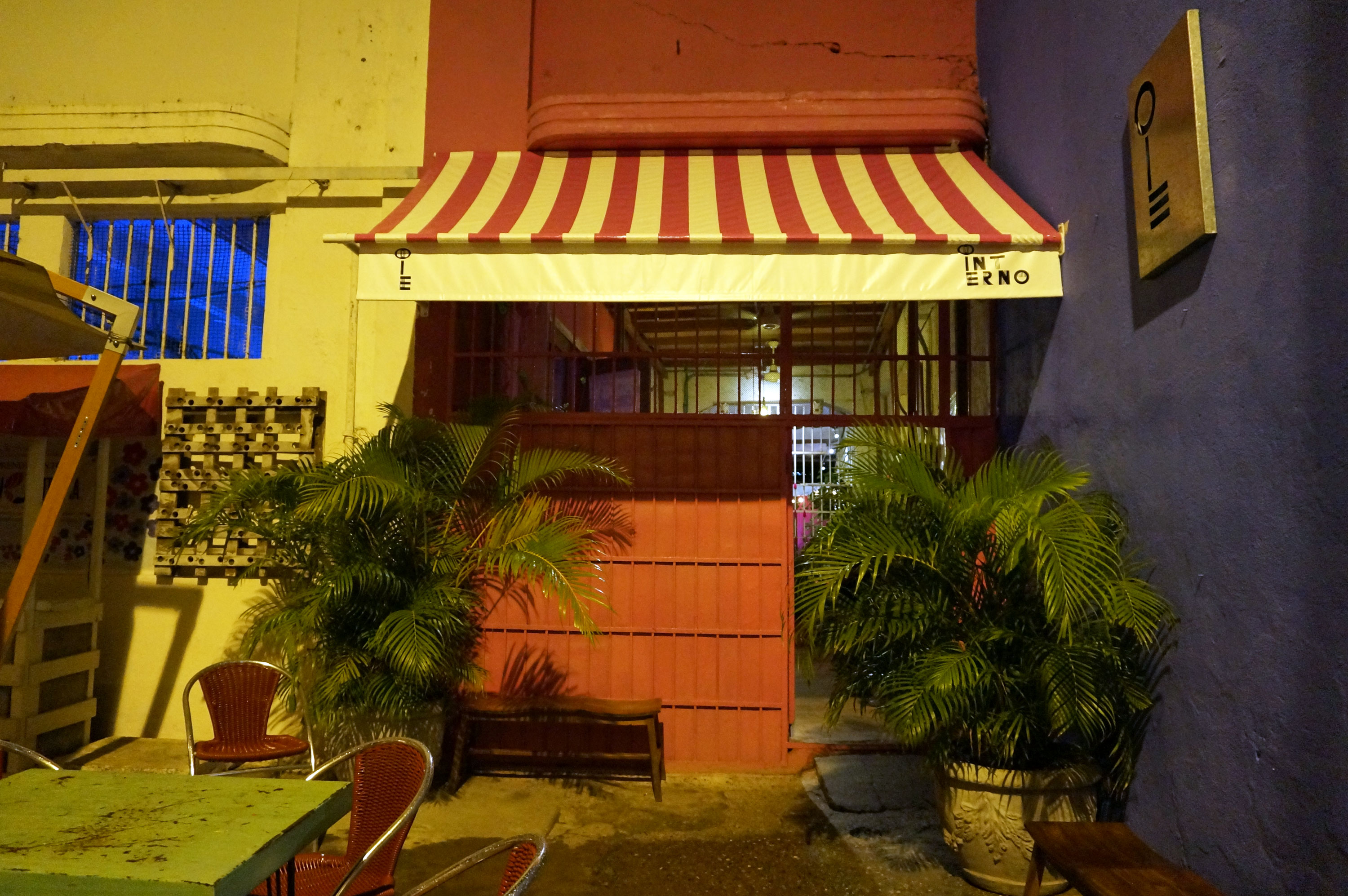In a crumbling building off the bustling tourist district of Cartagena on the northern coast of Colombia, waitresses wearing pink bows in their hair place matching serviettes on tables as Elvis’ “Heartbreak Hotel” plays in the background. In a kitchen behind a metal door, chefs chop vegetables and debone fish ready for the evening’s service.
Restaurante Interno is one of the city’s most popular gourmet restaurants. It is also housed in the San Diego District Jail and staffed almost entirely by prisoners.
Videos by VICE

Silvia Rosa Rebolledo is an assistant in the kitchen, and has just finished preparing the salad to go with tonight’s posta cartagenera, a local beef dish. “When I leave, I want to be the best chef. I love it,” she says, smiling as she looks around the restaurant with its exposed brickwork and flowers painted onto the walls.
On the other side of the decorative murals are the cells where Rebolledo is completing a six-year sentence for extortion.
“I had a very hard time at the beginning, but I’m really happy here,” she tells me. “I’m treated differently.”
Rebolledo is one of 180 inmates currently interned at San Diego District Jail. It’s an overcrowded institution with windowless rooms and little escape from northern Colombia’s sometimes crippling humidity.

The women are able find some respite working at Restaurante Interno, though. Set up in late 2016 by the foundation Acción Interna, the restaurant aims to improve quality of life for incarcerated women, and provide the support and skills needed to secure a job when they are released.
“Some of us had very hard times in the past, but some are leaving that in the past and want to be free to have our lives,” Rebolledo says.
Crucially, the restaurant also acts as a rehabilitation programme, bridging the gap between those inside and out. It is the first project of its kind in Latin America.
“Prisoners are forgotten about in much of the world,” says Luz Adriana Díaz, the restaurant’s co-ordinator. “But civil society can come to learn what life is like here in Colombia’s prisons. Prisoners are stigmatised in society, so the women feel more free after doing this.”

Back on the restaurant floor, waitresses chat and laugh with customers as they serve prawns on a bed of vegetables grown from the prison garden, and fresh ceviche or posta cartagenera. Every dish is presented beautifully and tastes just as good—the inmates have been trained by celebrity chefs including Spanish chef Koldo Miranda and Harry Sasson, one of Colombia’s most notable food personalities, who helped to create the three-course menu. Day-to-day, the kitchen is led by one full-time professional chef who guides the team of eight kitchen staff and four servers. For security reasons and to help with reintegration into society, the team is made up of women who are coming towards the end of their sentences.

San Diego is a minimum security prison, and crimes range from extortion and robbery to drug trafficking and murder. The hardest thing, however, has not been working with the prisoners, but “changing people’s minds about inmates,” says Johana Bahamón, founder of Acción Interna.
“There is a lot of discrimination. I knew the prison situation here in my country before, but I didn’t know the stories of the inmates—that they are human beings,” she says. “After the first time I visited a prison, I couldn’t be indifferent to their situation inside.”
Colombia’s prisons are notorious for appalling conditions, widespread drug use, and chronic overcrowding, which reached a rate of 52 percent in 2016, according to the National Penitentiary and Prison Institute. The country’s prison crisis has even been classed as one of this year’s humanitarian challenges by the International Committee of the Red Cross, noting that Colombia’s prisons violate the human dignity and rights of detainees.


Inside the prison walls, San Diego feels overcrowded and decayed. It’s stuffy, rubbish is strewn on the floor, and in the outdoor courtyard offers hardly any shelter from the harsh sun. But before the foundation started working in San Diego, women were sleeping on floors. Now they have mattresses and beds, all decorated with personal blankets, photographs, and mementoes. With profits from the restaurant, the foundation has also set up a bakery, vegetable garden, and small study with computers.
“Everyone deserves a second chance and deserves the dignity of being treated like a human being.”
“There’s overpopulation in all of our prisons—it’s a problem in all of Latin America,” says Bahamón. “The prisons aren’t good, and they don’t treat them like human beings. I know they have made mistakes, but everyone deserves a second chance and deserves the dignity of being treated like a human being.”

Crystal Morissa Stephens, 23 and from the US, is the only foreign inmate here. She was caught with a suitcase lined with cocaine last December and has since been incarcerated without a sentence. She says she had been given the bag by someone else and didn’t know there were drugs. “I felt like my whole body was hot, and my ears were ringing. I was traumatised,” she says. “When I first came, it was emotionally very hard.”
But working at Restaurante Interno is helping, she says. A hip-hop artist back home, Stephens sometimes performs for customers in the restaurant.

“It’s not like how you imagine here. Visitors come in, we can cook, there’s music, it’s a vibe,” she says. “People are very supportive, they want to donate and figure out how they can help. I feel like they really achieved that goal of integration.”
“A lot of people here have different stories,” Stephens continues. “A lot of people are here for mistakes, accidents. They’re normal people, but they’re the people that make the best food.”
More
From VICE
-

Pretty Vectors/Getty Images -

Screenshot: Sony Interactive Entertainment -

Screenshot: PlayStation (YouTube) -

Mohamed Rida ROKI/Getty Images
